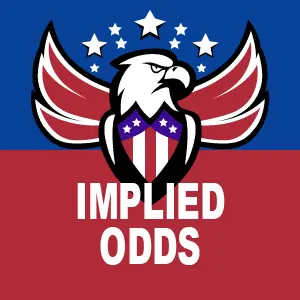Introduction to Implied Odds
Niko | March 31, 2009

In our last article, we explored what pot odds are, how to calculate them, and how to use them to your advantage when deciding whether to call a bet with a drawing hand. That article focused solely on pot odds and did not consider the implied odds in a hand. Implied odds are crucial when deciding whether to draw to a hand, and we will investigate them in this article.
The definition of implied odds
Implied odds are the ratio between the expected amount in the pot after the final betting round and the size of the call you need to make to stay in the hand and see the next card. This definition differs from pot odds because implied odds include the money you anticipate your opponent(s) will call if you complete your flush or straight. You can also view implied odds as a percentage. The implied odds are the size of the bet you must call divided by the size of the pot plus the chips you think your opponent will add if you make your hand.
For example, after the turn, if the pot is $20 and you need to bet $10 to see the river, and you believe your opponent would call a $15 bet if you make your hand on the river, your implied odds are $10/$35, which equals 28.5%.
Using implied odds to your advantage
Continuing with the above example, to call the additional $10 bet on the turn, your odds of making the best hand should exceed 28.5%. For instance, with an open-ended straight draw on the turn and your opponent holding top pair, you have 8 outs to complete your straight. With 46 unseen cards remaining, your chance of hitting your hand is 17.4%. In this case, folding is the correct decision.
However, if you have a flush draw and bottom pair, and you believe your opponent has top pair, you have more outs. You have 9 outs for the flush, 2 outs for a set, and 3 outs for two pairs, totaling 14 outs. This gives you a 30% chance to make the best hand on the river. Since 30% is higher than the 28.5% implied odds, calling is the right move.
Here is a more detailed example:
You hold 4 of Clubs5 of Clubs and the board shows 6 of Clubs9 of DiamondsKing of Clubs3 of Hearts after the turn. The pot is $100, and your opponent bets $80, making the total pot $180. You believe both a straight or flush would win, and you think your opponent has a strong hand. You anticipate your opponent will call another $120 on the river if you make your hand, making the potential pot $300. Therefore, you need better odds than 26.66% to justify the call.
The flush draw gives you 9 outs, and the straight draw gives you 8 outs, totaling 17 outs. This gives you a 37% chance of making the best hand on the river. Since 37% is better than the 26.66% implied odds, you should make the call.
When calculating your implied odds, avoid being overly optimistic. Accurate assessments of how much your opponent will call on the river are crucial. Being too optimistic can lead to greater losses than wins when using implied odds.